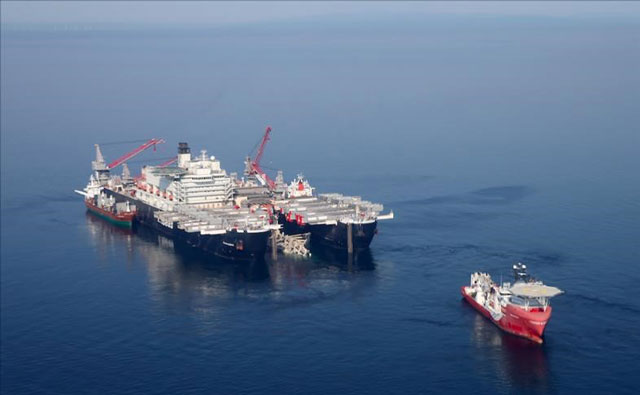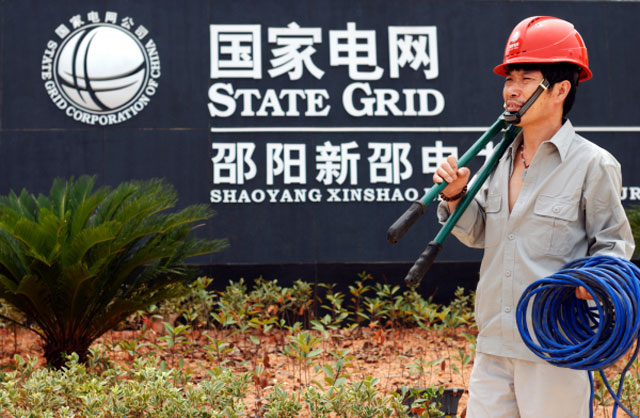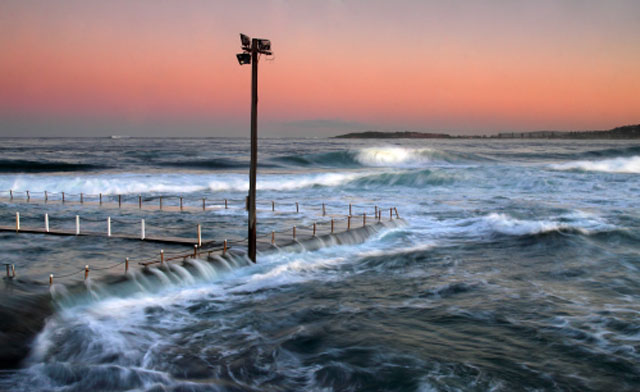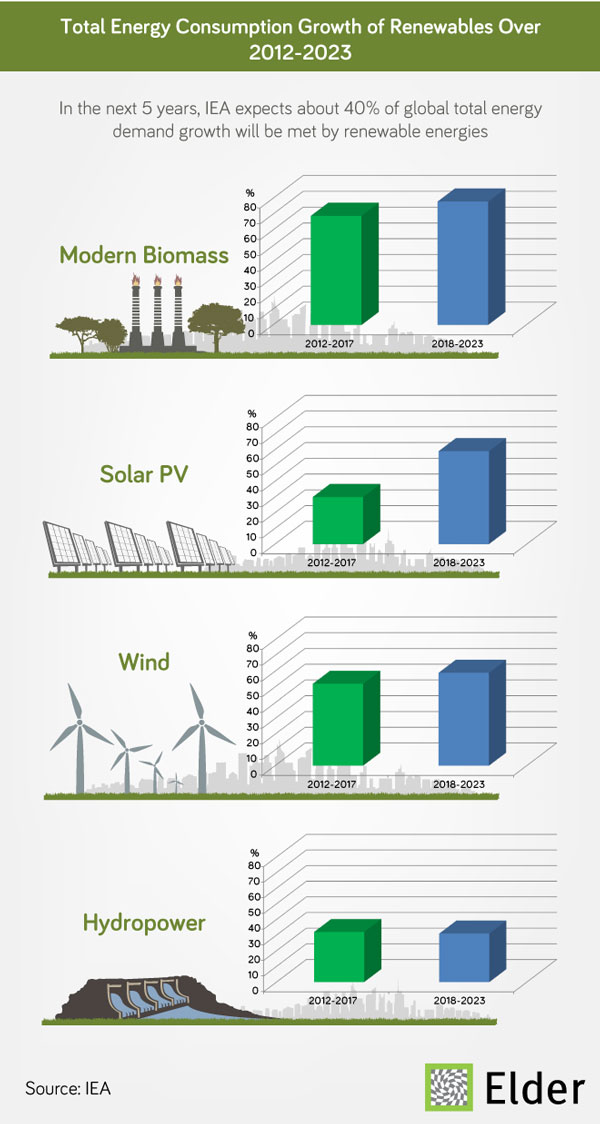
Construction of the offshore part of the TurkStream pipeline that will carry Russian gas across the Black Sea to Turkey has been completed, Russian gas producer Gazprom said on Monday.
The pipeline will go to Europe either through Bulgaria and Serbia or through Greece and Italy and become operational by the end of 2019.
“Projects of this kind and this project in particular are not directed against the interests of anyone. Projects of this kind are purely creative,” Russian President Vladimir Putin said as he and Turkish President Erdogan attended an official ceremony in Istanbul.
Work will now focus onshore and is on track to be completed by the end of 2019, he said.
Gazprom is building the TurkStream in two lines, each with a capacity of 15.75 billion cubic meters of gas per year. The first will supply Turkey and the second southern Europe.
Turkey is almost completely reliant on imports to meet its energy needs. A crippling currency crisis which has seen the lira plummet has increased costs, prompting energy companies to hike consumer prices.
Turkey’s state pipeline operator Botas will build the 69-km section of TurkStream which will carry natural gas from the coast to its distribution center in Luleburgaz in northwestern Turkey, Energy Minister Fatih Donmez told private broadcaster NTV, adding he expected this to be completed in 2019.
A 145-km section of pipeline from the distribution center to the border will be constructed by Botas and Gazprom, he said.
Source: Reuters

The world's largest pipelaying vessel, the Pioneering Spirit, completed the deep-water offshore construction of the TurkStream natural gas pipeline on Monday, Nov. 19. With the Turkish and Russian presidents doing the honors, the last offshore section of this landmark natural gas pipeline was put into place on Monday.
"The TurkStream natural gas pipeline project will be ready to operate in 2019 after tests are carried out," Recep Tayyip Erdogan, Turkey’s president, said at a ceremony in Istanbul marking the completion of TurkStream’s offshore section.
Allseas, the company that owns the ship, aimed at having the most technologically advanced construction vessel in the world, the Pioneering Spirit, which not only is designed for pipelaying but also for the installation and decommissioning of oil and gas platforms.
During the pipelaying of the two lines of the TurkStream project, 1,860 kilometers of pipes were laid in the Black Sea. The vessel laid 6.27 kilometers of pipes in one day on Aug. 26, a new world record that by far surpassed the daily average record of four kilometers. Construction of the offshore section of the project commenced in May in the Black Sea near the Russian coast.
The Audacia vessel, also owned by Allseas, which undertook the construction for both strings of the gas pipeline's offshore section - carried out the pipelaying while the Pioneering Spirit initiated the project's deep sub-sea water construction.
The Pioneering Spirit has a maximum speed of 14 knots, can accommodate 571 employees at any given time, has 288 cabins, 13 floors, and an installed power capacity of 95,000 kilowatts. The vessel's dimensions reflect its singularity as its size corresponds to that of six Boeing 747s while having the ability to lift the equivalent of 2.5 Eiffel Towers at the same time.
As befitting such a colossal vessel, even in the event of massive waves, the vessel remains stable in laying pipes one at a time every eight minutes. The vessel, of which its construction started in 2012, is among a fleet of other Allseas enormous vessels including the Solitaire, Audacia and Lorelay.
However, it is not all work and no play as the crew from over 40 countries has recreational areas with Playstations, television screens and facilities for various activities, such as ping-pong and foosball. The catering crew serves between 1,500 and 2,000 meals daily on board, while 250 kilograms of rice and 11,000 eggs are consumed per week.
The majority of the fruit and vegetables, milk and canned goods are supplied from Turkey.
During the pipelaying work, the captain expertly navigated the vessel to avoid the newly discovered aircraft wrecks and archeological pieces of interest on the seabed while ensuring that no undue delays were made in their work.
The Pioneering Spirit made its debut offshore mission in August 2016 with the removal of a mobile production platform from Norwegian waters. The TurkStream pipeline is the vessel's maiden pipelaying project. It commenced deep-water pipelaying operations in late June 2017 and has been working exclusively for the TurkStream project ever since.
The pipeline's second string will transfer gas to Europe via Turkey. Discussion between Gazprom and Bulgaria and Greece are ongoing to determine the destination point for the second line. The project, with a total capacity of 31.5 billion cubic meters, is enough to meet the energy needs of 15 million households.
The Swiss-based Allseas Group has executed nearly 300 projects worldwide, installing more than 21,500 km of subsea pipeline in water depths ranging from five meters to 2,730 meters.
Source: AA Energy

Turkey climbed six places to rank 44 in the World Energy Trilemma Index 2018, which the World Energy Council (WEC) administrated, WEC Turkish National Committee announced Wednesday.
The index ranked 125 countries' energy performance based on global and national data on three factors - Energy Security, Energy Equity, and Environmental Sustainability.
According to the overall ranking and balance score, Turkey's score increased to BBB in 2018, compared to CBB in 2017.
The ranking measures overall performance in achieving a sustainable mix of policies and the balance score highlights how well a country manages the trade-offs of the Trilemma with "A" being the best.
In line with the WEC's index, "Turkey's energy security score has improved relative to other countries and as part of the measure of supply diversity," the WEC said.
The country’s rating rose 15 places to rank 67 in 2018, compared to 82 in 2017 in energy security scores and improved its balance score from C to B.
In environment sustainability, Turkey's position moved up to 49 in 2018, from 55 in 2017. In energy equity, however, the country's score dropped two points from 52 in 2017 to 54 in 2018.
From the index results, the WEC advised that Turkey needs to have enormous investment volumes to accommodate a fast-growing demand for energy and meet the country's continuing growth.
Record high in domestic resources
The WEC index indicated that Turkey's domestic resources are meeting a record high level in primary energy consumption at 27 percent and energy consumption at 50 percent of power generation. Moreover, 33 percent of overall power generated in Turkey is from renewable resources, according to the index.
The Council has also evaluated energy security risk in the country, taking into account the precautions taken and investments made.
"Numerous initiatives are underway to improve energy security in the country. Two competitive tenders of 1,000 megawatts each for solar and onshore wind was completed in 2017. Turkey has announced a first of its kind tender to be held in 2018 for offshore wind, targeting 1,200 megawatt of installed capacity. An additional 8,222 megawatts of capacity was added in 2017, almost 70 percent of which is from renewable resources, mainly solar and wind," the Council said.
Turkey ranks second in additional geothermal installed capacity
An estimated 300 megawatts of new geothermal power capacity came online in 2017, putting Turkey in second place on the list in terms of net additional installed capacity in 2017, the index showed.
Moreover, Turkey also has firm plans to add nuclear power to its energy mix. A construction license for Turkey's first nuclear power plant, Akkuyu in Mersin was granted by the regulator and is scheduled to become operational by 2023. A new agency has been established in Turkey to regulate its nuclear energy sector, the WEC said.
The WEC index also considered international natural gas pipeline projects in Turkey.
"The most important of the Southern Gas Corridor - the Trans-Anatolian Natural Gas Pipeline (TANAP) has become operational in June 2018. Export to Europe is expected in 2020 once the construction of the Trans Adriatic Pipeline (TAP) is completed.
The TurkStream Natural Gas Pipeline is expected to become operational by the end of 2019, the WEC said.
Source: AA

Turkey’s electricity consumption decreased by 2.13 percent in October compared to the same month last year, according to the Energy Ministry. The country’s power consumption was 22.66 billion kilowatt-hours in October, the ministry said on Nov. 19.
Turkey produced 22.88 gigawatt-hours of electricity in October 2018 - a production decrease of 1.93 percent compared to the same month of 2017. The country produced 34.84 percent of October’s electricity from natural gas power plants while 10.64 percent came from hydro plants and 24.93 percent from imported coal.
Local coal plants contributed 18.84 percent to electricity generation, wind plants constituted 6.52 percent and the remaining 4.23 percent of electricity production was generated from geothermal, fuel oil and biogas plants. Turkey’s electricity imports from neighboring countries decreased by 3.11 percent and reached 147.36 million kilowatt-hours compared to 152.10 million kilowatt-hours in October last year.
However, the country’s electricity exports to neighboring countries increased by 11.67 percent to 362.05 million kilowatt-hours of electricity. Electricity exports in October last year amounted to 324.21 million kilowatt-hours. In addition, Turkey’s total installed power capacity reached 88.2 thousand megawatts by the end of October, according to official figures.
Source: Hurriyet Daily News

On 20 November 2018 the Commission is opening a call for gas projects to be submitted as candidates for the fourth European Union 'Projects of Common Interest' (PCIs) list. Calls for PCI candidates in the Priority Corridors for smart grids, cross-border carbon dioxide network, and oil will follow. For more information, please consult the PCI webpage regularly.
In accordance with the Regulation on guidelines for trans-European energy infrastructure (No 347/2013), candidate projects in gas must be included in the Ten-Year Network Development Plans (TYNDP) developed by the European Network of Transmission System Operators for gas (ENTSO-G).
How to apply?
Promoters of TYNPD projects wishing to become PCIs are now invited to participate in the call by submitting an application via the online questionnaire. The TYNDP data will be directly retrieved from your TYNDP 2018 project sheet.
You can apply as of today 20 November 2018 until 16 January 2019 at midnight.
What are the next steps after project submission?
Eligible projects will be assessed to identify if they address a European need that can be best solved through infrastructure. Projects that pass this initial test will be further assessed against the criteria set out in the TEN-E Regulation to measure their contribution towards the implementation of the respective energy infrastructure priority corridor and their fulfilment of the aforementioned criteria. Projects meeting all requirements of the Regulation and making the largest contributions will be proposed for inclusion in the 4th Union list of PCIs.
The list will be adopted by the European Commission by the end of 2019 and published in the Official Journal by early 2020.
Source: European Commission

Today, the U.S. Department of Energy (DOE) is announcing awards of up to $7.5 million to support the research and development of innovative designs that will strengthen the resilience of the U.S. power grid. The selected projects will lead to the next generation of transformers that can be shared and replaced more easily in the event of a failure, are smarter with embedded sensors and analytics, and are more secure to cyber-physical threats. Under this funding through the Office of Electricity’s Transformer Resilience and Advanced Components (TRAC) Program and Resilient Distribution Systems (RDS) Program, research partnerships will create innovative designs and prototypes of large power transformers (LPTs) that are more flexible, adaptable, and secure, thereby increasing the resilience of the grid. Transformers are fundamental to the grid, with essentially all electricity generated and delivered through these devices.
“A resilient, reliable, and secure power grid is vital to the Nation’s security, economy, and the services that American communities and businesses depend on every day,” said Under Secretary of Energy Mark Menezes. “Creating the next generation of these critical grid components will help ensure the Nation’s critical energy infrastructure is secure and able to recover rapidly when disruptions occur.”
Building on the Administration’s commitment to strong national critical infrastructure as reemphasized throughout November during Critical Infrastructure Security and Resilience Month, this investment is the latest example of DOE’s commitment to ensuring secure, reliable, and resilient electricity. As outlined in the Fixing America’s Surface Transportation Act (FAST Act), it is the Department’s responsibility to protect or restore our Nation’s defense critical electric infrastructure.
LPTs can weigh hundreds of tons, cost millions of dollars, and are typically custom-made with procurement lead times of one year or more. Generally tailored to customer specifications, these components are not readily interchangeable with each other, and their high costs prohibit extensive spare inventories. In addition, many are approaching or exceeding their design lives, presenting an opportunity for next-generation transformers that can provide new capabilities needed in the grid of the future as well as reinvigorate domestic manufacturing.
Source: Department of Energy

In early February, Chinese workers began assembling a soaring red-and-white transmission tower on the eastern edge of the nation's Anhui province. The men straddled metal tubes as they tightened together latticed sections suspended high above the south bank of the Yangtze River.
The workers were erecting a critical component of the world’s first 1.1-million-volt transmission line, at a time when US companies are struggling to build anything above 500,000 volts. Once the government-owned utility, State Grid of China, completes the project next year, the line will stretch from the Xinjiang region in the northwest to Anhui in the east, connecting power plants deep in the interior of the country to cities near the coast.
The transmission line will be capable of delivering the output of 12 large power plants over nearly 2,000 miles (3,200 kilometers), sending 50% more electricity 600 miles further than anything that’s ever been built. (Higher-voltage lines can carry electricity over longer distances with lower transmission losses.) As one foreign equipment provider for the project boasts, the line could ship electricity from Beijing to Bangkok—which, as it happens, only hints at State Grid’s rising global ambitions.
The company initially developed and built ultra-high-voltage lines to meet the swelling energy appetites across the sprawling nation, where high mountains and vast distances separate population centers from coal, hydroelectric, wind, and solar resources. But now State Grid is pursuing a far more ambitious goal: to stitch together the electricity systems of neighboring nations into transcontinental “supergrids” capable of swapping energy across borders and oceans.
These massive networks could help slash climate emissions by enabling fluctuating renewable sources like wind and solar to generate a far larger share of the electricity used by these countries. The longer, higher-capacity lines make it possible to balance out the dimming sun in one time zone with, say, wind, hydroelectric, or geothermal energy several zones away.
Politics and bureaucracy have stymied the deployment of such immense, modern power grids in much of the world. In the United States, it can take more than a decade to secure the necessary approvals for the towers, wires, and underground tubes that cut across swaths of federal, national, state, county, and private lands—on the rare occasion when they get approved at all.
“A long-distance interconnected transmission grid is a big piece of the climate puzzle,” says Steven Chu, the former US energy secretary, who serves as vice chairman of the nonprofit that State Grid launched in 2016 to promote international grid connections. “China is saying ‘We want to be leaders in all these future technologies’ instead of looking in the rear-view mirror like the United States seems to be doing at the moment.”
But facilitating the greater use of renewables clearly isn’t China’s only, or even primary, motivation. Transmission infrastructure is a strategic piece of the Belt and Road Initiative, China’s multitrillion-dollar effort to build development projects and trade relationships across dozens of nations. Stretching its ultra-high-voltage wires around the world promises to extend the nation’s swelling economic, technological, and political power.
Source: MIT Technology Review

French tidal energy technology developer Blue Shark Power System said on Tuesday it has signed a pact with the Republic of Djibouti to deliver 120 MW of its tidal power turbines for projects in the African country.
Blue Shark Power System has sealed a Memorandum of Understanding (MOU) with the Republic of Djibouti that will see it supply 495 of its Blue Shark River turbines, with a capacity of 240 kW each. Under the same pact, the French firm will conduct a feasibility study and test one turbine in the first half of next year. Delivery of the first 80 machines is scheduled for the first half of 2020.
At present, the Republic of Djibouti is highly dependent on diesel and heavy fuel oil for power generation and also buys hydropower electricity from Ethiopia. Under an ambitious plan, the country will seek to lower its power production costs by 50% and become energy independent, sourcing all of its power from renewables by 2020.
Blue Shark Power System, which offers turbine models for seas and rivers, claims that its turbines can generate two to three times more electricity as compared to a conventional turbine. The French company said its patented technology is now addressed towards emerging countries, while it considers supporting its global growth through an initial public offering on the Euronext Access stock exchange in Paris.
Source: Renewables Now
Flex and Balances by Accenture
Significant shifts are under way in how electricity is produced and consumed in Europe. On the demand side, adoption of electric vehicles (EVs) and the switch to electricity for heating and cooling of residential and commercial buildings are gaining momentum. On the supply side, wind and solar power are accounting for a growing share of electricity generated in Europe. The net impact of these shifts will be higher demand peaks, but of shorter duration. The industry is being challenged to find new ways to match supply and demand.
Flexibility is the ability to manage variability and volatility to balance supply and demand, within constraints of infrastructure. This report quantifies the growing need for flexibility in the European electricity system, and discusses how new sources of flexibility can be unlocked from consumers to contribute to meeting this need.
Please click here to read the full report.
Accelerating Clean Energy Investments
November 27 / Brussels
Balkan Energy Finance Forum 2018
November 28 – 29 / Belgrade
The 8th Eilat-Eilot Summit
December 2 – 4 / Israel
Intersolar India 2018
December 11 – 13 / India
World Future Energy Summit
January 14 – 17 / Abu Dhabi
Distributech Conference & Exhibition
February 5 -7 / New Orleans

